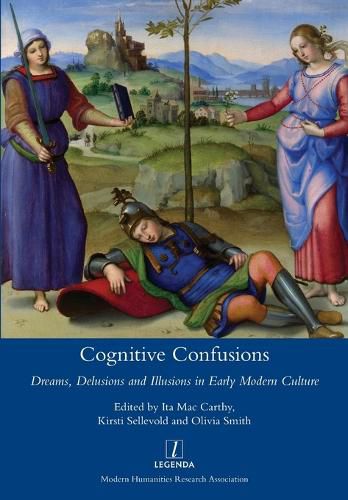Readings Newsletter
Become a Readings Member to make your shopping experience even easier.
Sign in or sign up for free!
You’re not far away from qualifying for FREE standard shipping within Australia
You’ve qualified for FREE standard shipping within Australia
The cart is loading…






This title is printed to order. This book may have been self-published. If so, we cannot guarantee the quality of the content. In the main most books will have gone through the editing process however some may not. We therefore suggest that you be aware of this before ordering this book. If in doubt check either the author or publisher’s details as we are unable to accept any returns unless they are faulty. Please contact us if you have any questions.
A distinctively human aspect of the mind is its ability to handle both factual and counterfactual scenarios. This brings enormous advantages, but we are far from infallible in monitoring the boundaries between the real, the imaginary and the pathological. In the early modern period, particularly, explorations of the mind’s ability to roam beyond the factual became mainstream. It was an age of perspective art, anamorphism and optical illusions; of prophecy, apocalyptic dreams, and visions; and of fascination with the supernatural.
This volume takes a fresh look at early modern understandings of how to distinguish reality from dream, or delusion from belief. Opening with cognitivist and philosophical perspectives, Cognitive Confusions then examines test cases from across European literature, providing an original documentation of the mind in its most creative and pathological states.
$9.00 standard shipping within Australia
FREE standard shipping within Australia for orders over $100.00
Express & International shipping calculated at checkout
This title is printed to order. This book may have been self-published. If so, we cannot guarantee the quality of the content. In the main most books will have gone through the editing process however some may not. We therefore suggest that you be aware of this before ordering this book. If in doubt check either the author or publisher’s details as we are unable to accept any returns unless they are faulty. Please contact us if you have any questions.
A distinctively human aspect of the mind is its ability to handle both factual and counterfactual scenarios. This brings enormous advantages, but we are far from infallible in monitoring the boundaries between the real, the imaginary and the pathological. In the early modern period, particularly, explorations of the mind’s ability to roam beyond the factual became mainstream. It was an age of perspective art, anamorphism and optical illusions; of prophecy, apocalyptic dreams, and visions; and of fascination with the supernatural.
This volume takes a fresh look at early modern understandings of how to distinguish reality from dream, or delusion from belief. Opening with cognitivist and philosophical perspectives, Cognitive Confusions then examines test cases from across European literature, providing an original documentation of the mind in its most creative and pathological states.